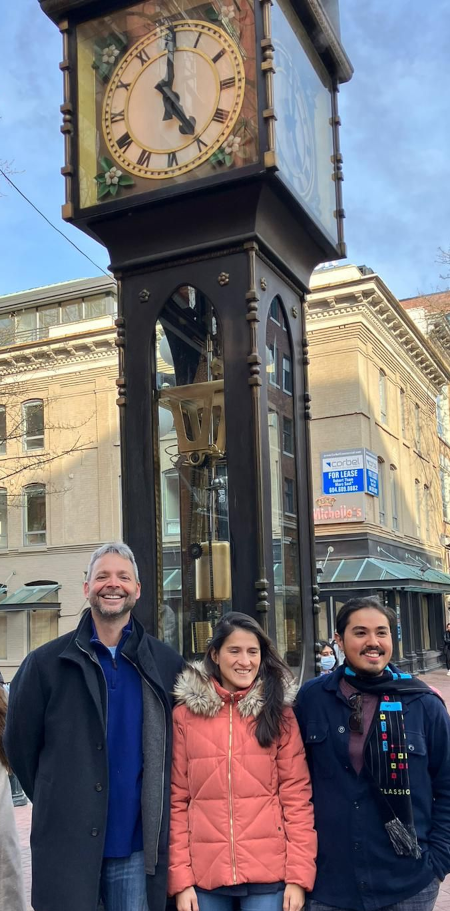
A Chain is only as Strong as its Weakest Link
The latest advancements in clocks and timing systems were on full display at the recent Workshop on Synchronization and Timing Systems (WSTS).
Throughout history, better clocks have enabled advancements in technology and commerce.
In the last decade there have been rapid advancements in commercial clocks for network timing and PNT applications (see below).
Today’s chip-scale atomic clocks are stable to better than a nanosecond (one billionth of a second) per month, and larger clocks drift less than a picosecond (one trillionth of a second) per month.
But these individual clocks still need to be synchronized.
WSTS presenters talked about all the latest advancements in local synchronization technology, including white rabbit, AI-enhanced PTP, and timing over 5G, wi-fi and terrestrial beacons.
But synchronization over global distances have not kept pace with these advancements.
This is the role (reluctantly) taken by GPS, which has been practically limited for decades at tens of nanoseconds and prone to costly outages.
The next big step is global resilient and sub-nanosecond synchronization architecture.
Last Week's Theme: Necessity is the Mother of Invention
- Check out our Start Engine campaign page to own your own piece of Xairos!
- Following up from meetings at WSTS, Satellite 2023 and START Summit 2023, including invitations for new presentation opportunities .
- Developing new proposals, new IP, and hardware development, and preparing for meetings and presentations at Gig City Goes Quantum and Space Symposium,
- Standing up a UK subsidiary to address new business opportunities.
- Interviews and podcasts with the Space Foundation and Foundation for the Future to be published soon.
- A recent Harvard report “China’s BeiDou: New Dimensions of Great Power Competition” describes how China is using BeiDou to one-up GPS in capability and as a soft power tool. Now there are reports of China’s jamming of GPS over the western Pacific and South China Sea that are creating issues with Qantas flights and a US Navy aircraft carrier.
- Check out this Association of Old Crows podcast “Navigating Our Dependency on GPS” to learn a little bit about the long history of GPS spoofing. “GPS started out in the words of its chief architect Brad Parkinson, as an effort to put five bombs into one hole. It was definitely a military capability but it very quickly it became a civilian capability also.”
- The European Commission Science Joint Research Centre (JRC) “Assessing Alternative Positioning, Navigation, and Timing Technologies for Potential Deployment in the EU” policy report noted that “although widely used, GNSS technology suffers from unique shortcomings, and without alternatives in place, the effects of an outage would be far-reaching and damaging to the European economy.”
- The main topic of discussion at the 15th European Space Conference was space security with a special focus on the vulnerability of GNSS. “One year ago, we were just on the eve of war. Now, we are in the middle of a war, so the security of Europe in space is a very timely subject.”
- In testimony before the US Senate, Department of Defense officials discussed plans to increase small business engagement with the defense industrial base, saying that "this is an economic and national security risk for our nation," so are "working to strengthen our small business supply chains, increase competition and attract new entrants."
- Gig City Goes Quantum, April 14 - 21, Chattanooga, TN
- Space Symposium, April 17 - 20, Colorado Springs, CO
- Assured Positioning, Navigation and Timing (APNT) Summit, May 10 - 11, National Harbor, MD
- Commercialising Quantum Global, May 17 - 19, London UK
- Quantum 2.0 Conference, June 18 - 22, Denver, CO
- Q4I, June 27 – 29, Rome, New York
- Small Satellite, August 5 – 10, Logan, Utah
- Euroconsult, September 11 – 15, Paris, France
- APSCC, October 10 – 12, KL, Malaysia
- ITSF, Oct 30 – Nov 2, Antwerp, Belgium
- UK National Quantum Technologies Showcase 2023, Nov 2, London, UK
- SLUSH, Nov 30 – Dec 1, Helsinki, Finland
Clocks have been improving in leaps and bounds over the past decade.
Most of these advancements were funded by government agencies that needed stable clocks for science applications, position and navigation systems, and radar, communication and sensor arrays.
In the modern era, the atomic clocks have set the standard for clock stability.
Atomic clocks measure “time by monitoring the resonant frequency of atoms” based on their different energy levels.
The original atomic clocks from the 1950s were based on a transition of the cesium-133 atom, but today use elements that offer greater stability (hydrogen) and smaller size (rubidium).
These clocks have since improved by five orders of magnitude, and today the NIST-F2 cesium fountain clock has an uncertainty of 1 second in 300 million years!
But the race is on to reach better stability by leveraging new elements that transition at higher optical frequencies instead of microwave frequencies.
These optical clocks “resonate on frequencies up to 100,000 times higher” than the cesium-133 atomic clocks, using elements like strontium, ytterbium, and even “nuclear” atoms.
But who needs optical clocks when you have a steam clock?
To learn more, please email us or schedule a meeting here.

